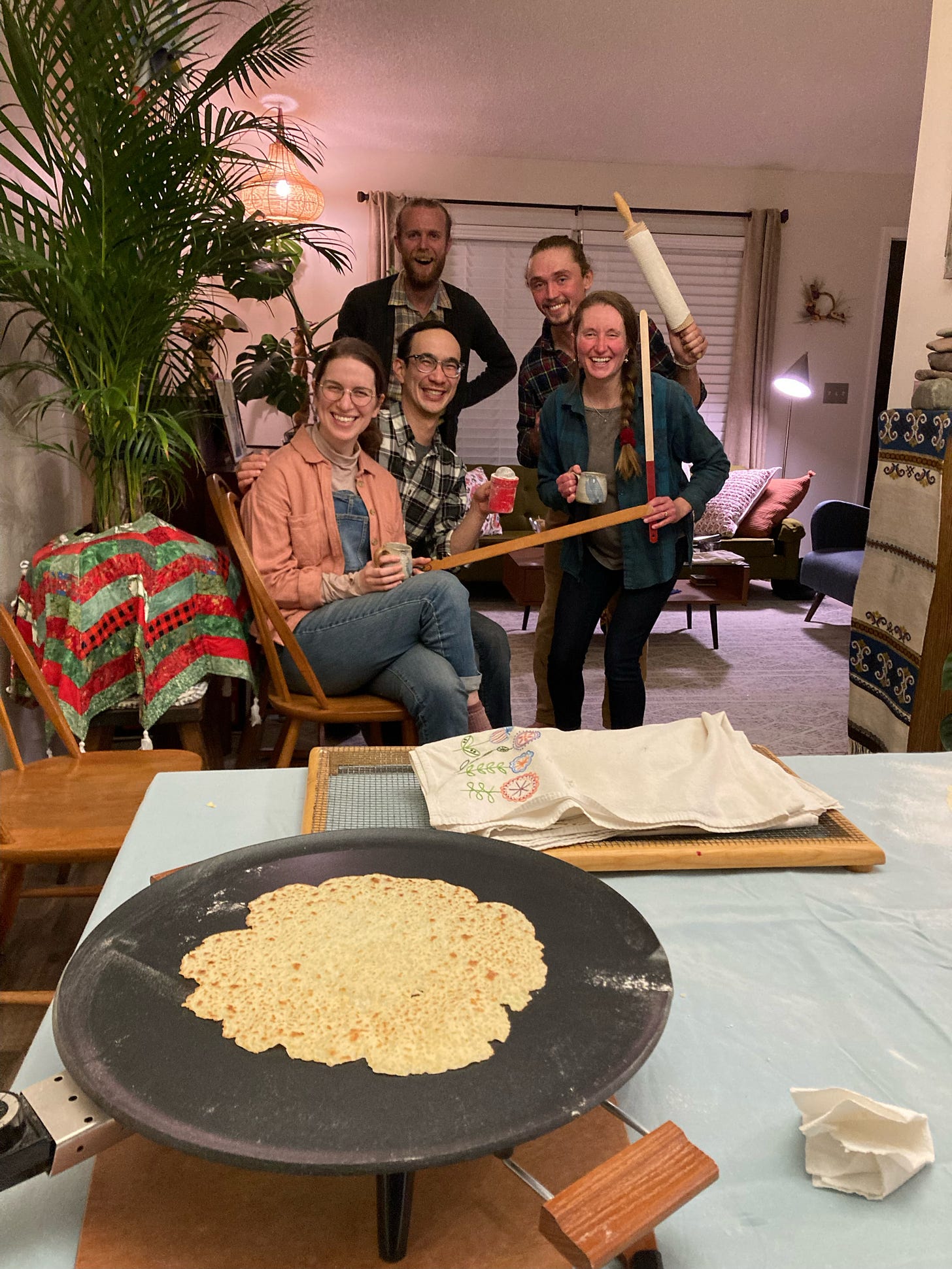First of all, thank you to everyone who reached out about last month’s newsletter; we’re thankful that the pace of the winter months gives us time to share the story of why we chose to make the move out to the farm. Seed-starting time is around the corner, but while we have the opportunity, I thought I’d share some follow-up thoughts that address a common misconception about our goals for the farm. If you missed last month’s newsletter and would like to get caught up before reading what comes next, you can find it here.
Sourdough, Yogurt and Other Domestic Animals
Last Sunday, after I finished straining a batch of home-cultured yogurt and pulled a loaf of sourdough bread out of the oven, I thought about taking a picture and posting it on instagram. But I didn’t, and it wasn’t because the yogurt or the bread wasn’t pretty enough for social media (though my bread decoration could use some practice). Rather, I paused on posting because I’ve become concerned that my Old World hobbies have created the wrong impression of our farming goals. On the less problematic side, it’s not uncommon for us to get jokes about living the “pioneer life.” On account of our country’s history, Americans have the odd reflex of associating farming with pioneers; the Jethro jokes come with the territory, and we just grin and bear them.
On the other hand, there’s another association (it often comes up after we mention our goat plans) that I’d like to try and avoid: homesteading. Now, to be fair, homesteading is having a moment on the internet right now (the amount of rage/admiration that someone like Ballerina Farms can generate is a good testament to this). And some of the impulses that drive the modern fascination motivate us, too. For example, we agree with the importance of knowing where one’s food comes from and of having practical skills like bread-baking or canning. Raising Herbert where he can run around and experience the natural world around him is also a key value that brought us out to the farm. The discomfort with homesteading crops up at one key point, and once again, America’s pioneer roots plays a role.
Community-Sufficiency
The rhetoric of internet homesteading often comes laden with a high regard for self-sufficiency: growing all your own food, making all your own clothing, getting “off the grid.” There’s a lot of layers here, and again, some of them resonate with our approach, but others seem misguided. First off, the myth behind homesteading doesn’t do it for us; we may laugh off the pioneer jokes, but we’re not interested in pretending that we’re alone on the prairie fending for ourselves. This myth ignores the fact that most settlers settled near friends and relatives so that they would have help in emergencies and for labor-intensive parts of the farming year. Not only that, but the Homestead Act of 1862 only granted farmers 160 acres. That may seem like a lot, but if taken in a square, it’s only half a mile across. There’s confusion in the pioneer mythology between the smaller, eastern farms (including the upper Midwest where we live), and the isolated ranches of the arid west which grew through the purchase of low-cost railroad land.
At its heart though, our discomfort with homesteading comes about because our goal isn’t self-sufficiency; our goal is contributing to a thriving rural community. We don’t try to grow all of our own vegetables because we love buying them from our friends Eleanor and Pierce at the farmer’s market (by the way, I think their CSA still has spots open). We don’t have a milk cow because we want small Minnesota dairy producers to make a living. We want small, family farms to be a viable option in this modern world, and so we know that means supporting them wherever we can. Our societal tendency towards polarization means that people can feel that they have to choose between self-sufficiency and an industrial food system. We hope to show that there’s an option in between.

In practical terms, this means that our farm has a commercial focus (local cut flowers) along with management practices and just plain hobbies (though don’t get me started on the term “hobby farm”). The aforementioned goat plan falls under the management practices; the goats aren’t for dairy or meat production (though we may eat some of them). Rather, they’re part of a larger project to control invasive buckthorn and restore degraded areas of the farmstead. I try to shoot at least one deer every year, not just to have meat in the freezer, but also to take part in the larger project of managing the deer population in Minnesota. We have chickens, and I’m planning on getting bees, simply because we enjoy them. If they become more work than we’re able to do, we’ll buy eggs or honey from another farmer with more time and expertise in those creatures.
To sum it all up: this farm may be crunchy or crazy or quixotic, but it’s not a homestead.*
*Except in the technical sense for property tax purposes.
Thank you all for bearing with me through a more philosophical newsletter! We’ll be back next month with an update on our new seed-starting setup. Pray for colder weather for us; this warm, wet January has us nervous about our new peony planting.
Your contrary farmers,
Kristofer, Julie & Herbert (and Willmar the Labrador, too)




